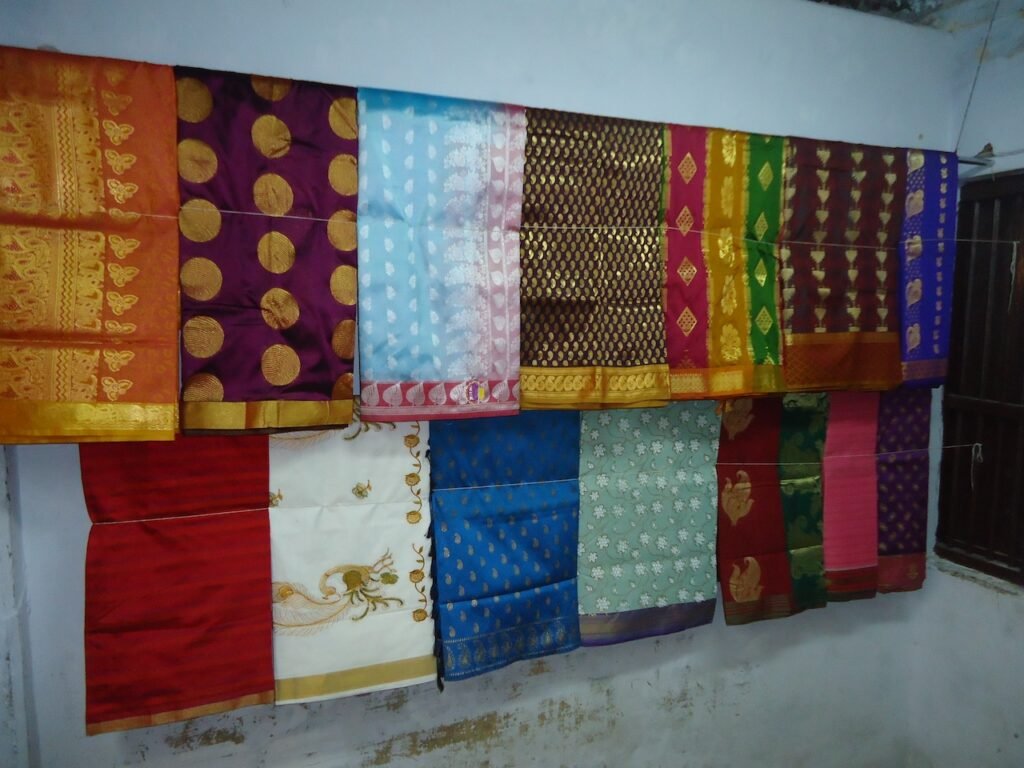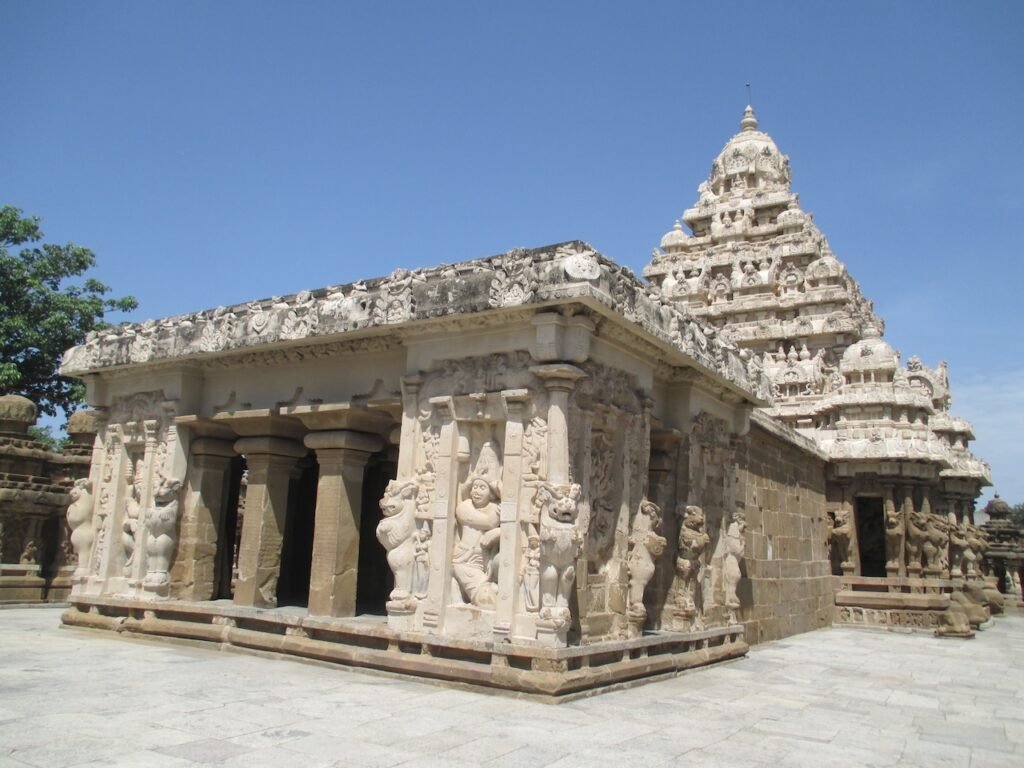Kanchipuram, often called the “City of Thousand Temples,” is a remarkable destination blending history, culture, spiritual legacy, and vibrant local traditions. For centuries, it has enchanted travellers, historians, and devotees alike with its timeless charm and architectural wonders. Below is a comprehensive guide covering Kanchipuram’s history, culture, tourist highlights, transport routes, revenue administration, and location, along with plenty of FAQs.
Introduction to Kanchipuram
Located in Tamil Nadu, South India, Kanchipuram lies 72 km southwest of Chennai. Situated on the banks of the Vegavathy and Palar rivers, this city is renowned for its magnificent temples, exquisite silk sarees, and heritage that dates back over two millennia.
The History of Kanchipuram
Kanchipuram traces its history to at least the 2nd century BCE, serving as a significant centre for different kingdoms, including the Early Cholas, Pallavas, Medieval Cholas, Later Pandyas, Vijayanagara Empire, Carnatic rulers, and the British.
- Pallava Dynasty: Kanchipuram flourished as the Pallava capital (6th–8th centuries) and saw the construction of classic Dravidian temples like Kailasanathar Temple.
- Cholas and Pandyas: The Cholas and later Pandyas further patronised Kanchipuram, leaving behind grand architectural legacies.
- Medieval and Colonial Era: Great spiritual teachers, Jain and Buddhist scholars, and the famous Adi Shankaracharya have all left their imprint here.
British Rule: The British period saw administrative changes, but Kanchipuram retained its cultural core.
Cultural Heritage and Traditions
Kanchipuram has been a centre for religious and educational advancement, historically renowned for promoting Hinduism, Jainism, and Buddhism.
- Language and People: Tamil is prevalently spoken, along with English and Telugu.
- Festivals: The city comes alive with festivals, Brahmotsavam, Garudothsavam, Maha Shivratri, and Pongal, which showcase ritualistic processions and local delicacies.
- Cuisine: Kanchipuram offers authentic South Indian treats such as idli, dosa, sambar, and rasam, reflecting the staple diet of rice and vegetables.
- Silk Industry: The world-famous Kanchipuram silk sarees, handwoven by skilled artisans, are prized for vibrant colours and rich zari work, attracting buyers globally.
Tourist Spots in Kanchipuram
Kanchipuram is a major spiritual and historical destination with more than a thousand temples.
Here are the must-visit attractions:
- Kamakshi Amman Temple: A revered Shakti Peeth, famous for its yogic mudra idol.
- Ekambareswarar Temple: One of the five Pancha Bhootha Sthalams, dedicated to Lord Shiva.
- Kailasanathar Temple: Classic Pallava architecture, built of sandstone, featuring intricate carvings.
- Varadaraja Perumal Temple: A centre of Vaishnavite worship known for breathtaking gopurams and sculptures.
- Kanchi Kudil: A heritage home displaying local culture and traditions.
- Other Activities: Adventure sports like parasailing, scuba diving, rock climbing, and rappelling add contemporary excitement to the city.
Location and Geography
Kanchipuram is situated on the northern East Coast of Tamil Nadu, adjacent to the Bay of Bengal and close to Chennai city. The district covers an area of 36.14 km² and comprises 479 revenue villages divided into 5 Taluks and 25 Firkas.

Transportation and Route Guide
Kanchipuram boasts good connectivity by road and rail, making it ideal for day trips or longer stay-cations from nearby cities.
- Rail: Regular trains run from Chennai Fort station to Kanchipuram East, with travel time around 2 to 2.5 hours.
- Bus: Buses operate from Chennai (Koyambedu) to Kanchipuram every 30 minutes, with a journey time of about 2 hours.
- Auto Rickshaws/Local Transport: For local sightseeing, auto-rickshaws are most convenient.
- Drive: Kanchipuram is well-connected by highways, and a car journey from Chennai takes about 1 to 1.5 hours.
- Routes to Other Cities: Direct buses to Tirupati (about 3 hours) and Bangalore (about 6 hours) are available.
Revenue Administration Structure
Kanchipuram’s administrative system is robust, with efficient delivery of government services.
- Revenue Divisions: 2 main divisions, Kanchipuram and Sriperumbudur.
- Taluks: 5 Taluks including Kanchipuram, Uthiramerur, Walajabad, Sriperumbudur, and Kundrathur.
- Firkas/Villages: 25 Firkas and 479 revenue villages form the administrative backbone.
- Revenue Department: The department focuses on efficient service delivery, land records, and rural development.
Frequently Asked Questions
Why is Kanchipuram called the “City of Thousand Temples”?
Kanchipuram has over a thousand temples, many with unique historical and spiritual significance, earning it this title and making it a foremost pilgrimage destination in India.
What are the top places to visit in Kanchipuram?
Some key spots include the Kailasanathar Temple, Kamakshi Amman Temple, Ekambareswarar Temple, Varadaraja Perumal Temple, and Kanchi Kudil. Adventure sports and local cuisine add to the experience.
How can a visitor reach Kanchipuram?
Kanchipuram is easily accessible by train, bus, car, or taxi from Chennai and other major cities nearby. Local transportation includes buses and auto-rickshaws for intra-city travel.
What is special about Kanchipuram silk sarees?
Kanchipuram silk sarees are globally famous for their fine quality, rich textures, vibrant colours, and beautiful zari work. They are handwoven by traditional craftsmen, combining age-old methods with modern designs.
Which festivals are celebrated in Kanchipuram?
Major festivals include Brahmotsavam, Garudothsavam, Pongal, and Maha Shivratri. These events feature elaborate processions, prayers, and authentic South Indian delicacies.
Is Kanchipuram suitable for non-religious travellers?
Absolutely. Besides temples and spiritual sites, Kanchipuram offers adventure sports, heritage sites, delicious local food, and stunning handloom shopping, ideal for history buffs, families, and thrill-seekers.
What are the main languages spoken in Kanchipuram?
Tamil is the principal language, but English and Telugu are also widely spoken, reflecting the city’s cosmopolitan heritage.
